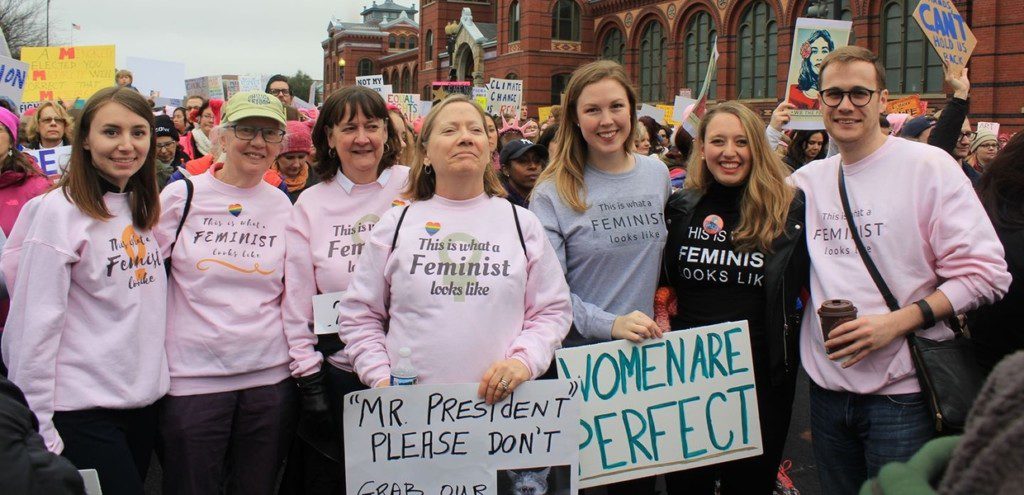
The day after President Donald Trump was sworn into office an estimated 5 million protestors around the world joined together for the “Women’s March.” The January 21st marches were the largest political demonstrations since the anti-Vietnam war protests in the 1960s and 1970s. The idea for the march originated partly as a reaction to the video footage from a 2005 Access Hollywood interview Trump participated in. “Grab ‘em by the pussy. You can do anything,” President Trump said to host Billy Bush.
“I felt disrespected when he was elected. Why wouldn’t I feel disrespected? My commander in chief thinks it’s acceptable to grab a woman by her genitalia,” said Angela Flowers, a student at Alabama State University. Globally, women were outraged. Teresa Shook shared her frustrations on a Facebook page she created. Similar pages popped up and were eventually consolidated into one. The creators joined together to launch the Women’s March on Washington. The goal was to send a bold message to the administration on its first day in office, and to the world that women’s rights are human rights. The original March on Washington grew into hundreds of sister marches. In the U.S. there were at least 408 and an estimated 81 sister marches in other countries.
Our Sister March
Birmingham participated as one of the official sister marches of the March on Washington. Daila Adams, one of the march organizers, told AL.com that she had hoped to have at least 200 participants in the Birmingham march. The Birmingham police estimates that there 5,000 took part in the event. “We are united for the rights and dignity for all people in this country,” Birmingham Mayor William Bell said to the crowd as they cheered him on. “When they try to limit our reproductive rights will you stand with me?” State Rep. Patricia Todd, the first openly gay elected official in Alabama, asked the crowd. Todd and Bell encouraged people to keep the energy going after the march by writing to their state representatives. “Make America think again,” “disability rights equal human rights,” “our rights aren’t up for grabs” and “hate never made us great” were just a few of the thousand signs spotted at the march serving as a testament that the Women’s March was not just for women.
My Facebook timeline was filled with plenty of women that supported the march, but there were some who did not see the need to protest. Some felt that women do have equal rights or thought the march was an “I hate Trump” campaign, but protestors had a different perspective.“We march for clean water for Flint, for Native property and health rights, for the impoverished to have the right to life and affordable healthcare, for innocent Black Americans to be able to walk down a street at night without being murdered by the police, for accessible education for all,” Rachel Merovitz of Montreal, Canada said when asked why she marched. Multiple protestors agreed the march was about having equal rights for all.
After the March
Founders of the march created a program called 10 Actions in 100 Days to make sure that the momentum from the march continues. Every 10 days they will provide a new action on issues that the group cares about as a whole. The march was the first action. The second was participating in a postcard party by writing your local senators about your concerns using a free postcard provided by womensmarch.com. The current action is hosting or participating in “Huddles.” “Huddles” allow you to communicate with other advocates within your community to discuss ways to take a stand against policies that infringe on human rights. The point of the “Huddles” is to figure out what matters to us and find ways to ensure that our government stands with us.
More Information
To learn more about the mission of the women’s march or sign up to be involved with the 10 Actions in 100 days, campaign visit www.womensmarch.com.
By Jackie Woods






